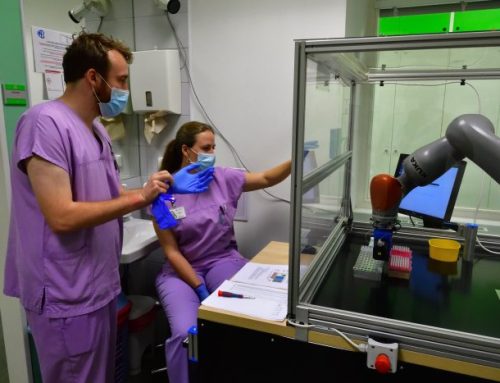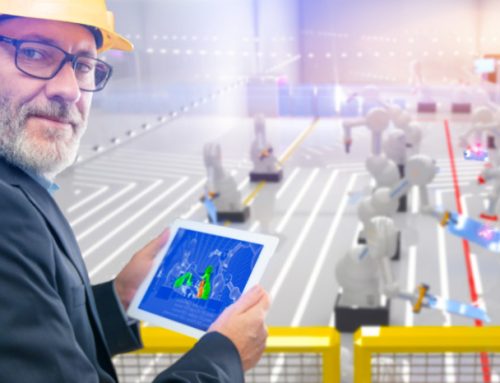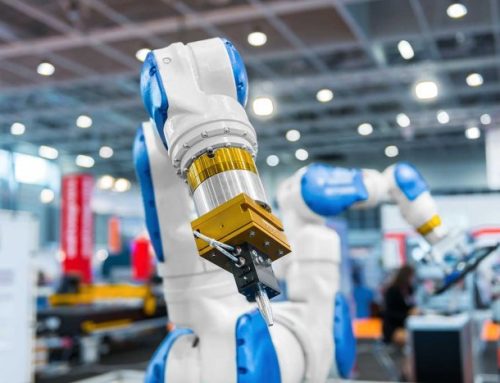Production quality control: 5 advantages of machine vision system for contactless measurement
22. 5. 2018
Machine vision helps maintain quality on production lines
Every manufacturing or industrial operation today is concerned with the question of quality of production. Usually, a specialist is responsible. The boundary of what is or no longer is a quality product is constantly shifting and demands for output control are growing. Often, it is not enough to simply check the output, and especially in the case of large volumes, it is also advantageous to include inter-operative process controls. Nowadays, modern machine vision can help many companies with quality monitoring.
Effective quality control
Let’s look at things one by one. In the case of piece production or products that do not have high demands on manufacturing precision, classic hand gauges (slider, micrometers, touch probes, standards, etc.) can be used.
Sometimes, however, these methods are not enough, usually in the following cases:
- When production volumes reach above a certain amount.
- When there is a need to check each piece on the production line at a high speed.
- When a stable level of control is required.
At that point, the key decision on which tool is the right one for a given need must be made.
The solution are camera systems for contactless measurement based on machine vision. What are its advantages?
Speed
Typically, CCTV systems adapt to the Takt time of the production line. It is not an exception if the check is carried out in a tact of 10 pcs / s, or even higher. Today’s cameras used for industrial measurements are capable of shooting tens to hundreds of images per second. Thus, it often happens that measurement is limited by product manipulation or production rather than machine vision.
Contactlessness
The basic advantage of CCTV systems is contactlessness. Time is not lost by manipulating the gauges and they are not worn – and it is also possible to measure even shape-complex parts at one point.
Machine vision also works well when checking products that cannot be, in principle, touched – due to high temperature, hygiene (food), chemical contamination, or fragility.
In addition, the distance of the sensor elements from the product can be controlled by appropriate system settings, making integration into production lines easier.
Accuracy
Camera systems offer a convenient compromise between practical usability and measurement accuracy. With appropriate adjustment of optical parameters and advanced calibration, measuring accuracy can be up to ± 0.001 mm.
Although classical metrological gauges (including those used in laboratories) are excellent, their integration into production lines is very complex and, in many cases, virtually unrealistic. Machine vision with camera systems is an appropriate solution.
Stability
A frequent picture of today’s output controls of manufacturing plants is that several workers (sometimes up to dozens of them!) control products manually using handheld gauges and standards.
Ensuring that all products are checked in a comparable (ideally the same) way is technically impossible. Every worker has his / her perception of space, shape, readings of measurements and their interpretation. Moreover, all of this is underlined by the loss of attention when performing monotonous activities.
Machine vision does not get tired. It evaluates all products in exactly the same way and archives recorded deviations or shortcomings for further statistical processing. This helps detect changes in production, tool wear, or line settings before the production of non-conforming products occurs.
Flexibility
Correct adjustment of each production line directly affects the quality of production. Normally, workers with this ability and attention to detail are respected employees. Their time is valuable and they usually have their hands full when ensuring that production runs smoothly and in the required quality.
Proximity cameras provide flexibility for rapid change to control another dimension or type of the product. Typically, simply select a product type from the preset list and the camera system is ready for another job.
Machine vision does not blink and goes right into action.
So when to choose a mechanical gauge and when contactless camera control?
It is true that for piece production where there are minimum requirements for tact or quality of production, conventional measurement and control methods are sufficient. Typically, these are handheld measuring instruments or automated touch devices.
This, however, fundamentally changes in a situation where, on the contrary, high tact measurement is demanded with a requirement for flexibility. If it is not possible for the product to touch for some reason, CCTV systems are virtually the only way to meet such a quality control requirement.
Machine vision is an innovation that helps industrial and manufacturing companies maintain a high quality standard of production.
But one thing is certain: Whatever method of quality control is used, it should ensure that only products with the required parameters and quality can get to the customer from the production process. Otherwise, there is a risk of claims and difficulties … and this something you have certainly heard of before. ?






